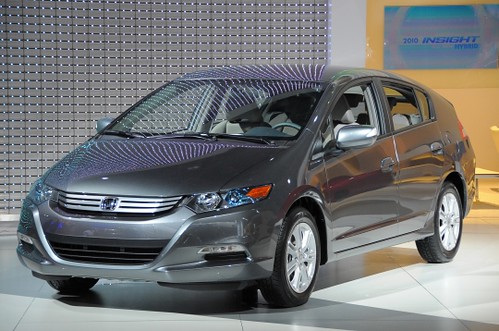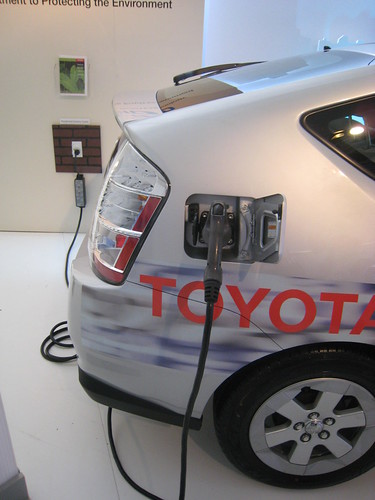Last week at the 2009 SAE World Congress the final plans were bashed out for a new way to charge plug in vehicles. Sadly it’s not an inductive one like the oh-so-simple charge paddles which were used on cars like the EV1 and RAV4EV to name but a few. No, this new standard is a good old-fashioned mechanical plug. You plug your car in and up to 30 Amps at either 120 or 240V flows into your car. Neat.
The latest version of the charging standard, called J1772, will include a five prong plug, capable of allowing communication between the external charger and the car charging. The Volt is rumored to be using it and Tesla have already signed up to make it standard on their cars. But it’ll only be used in the USA. Europe, in it’s own special way, has gone a different route, with a three-prong design capable of up to 80Amps at 240V. Unfortunately, the European standard is three-phase, meaning that it is unlikely to work in most European domestic situations without a complete home re-wire.

Fast charging is great, but does this spell the end for the DIY converter, or those of us who already drive cars with standard domestic plugs? And when you scratch the surface we risk looking at a future where charging plugs are far from standard. With the European standard and US standard finalized, are car companies now going to play nice and only ever use one of two EV charging plugs. What about cross-continent imports? And will those of us with cars now be able to retrofit our cars?


